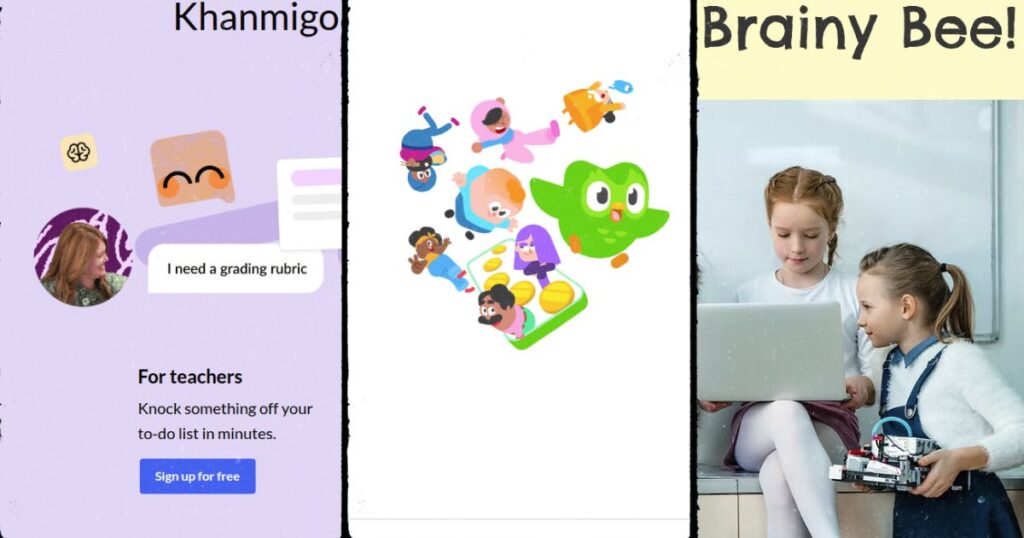Hey, fellow parents! If your days are anything like mine, you’re juggling school, work, meals and chores — and trying to work in some fun and learning time with the kids. It’s not always easy, right? But what if I told you AI could sprinkle a wee bit of magic on top?
No, I don’t mean a house that robots have taken over. And I don’t mean that in the touchy-feely, mystical way of so many other products, but rather straightforward, clever tools that use artificial intelligence to help make everyday family life easier, more creative and even fun for your kids (and you, if I am being honest). No matter if your child is in kindergarten or high school, A.I. can help them learn better, stay engaged and cut you a little slack as well.
So let’s delve into some down-to-earth ways AI is creeping into our homes — and how you can harness it to make life easier and more entertaining for your family.
Meet Your New Parenting Sidekick: AI
You might already use AI without knowing it. Like when Netflix suggests a show or Alexa sets a timer. Now, imagine using smart tech for homework, creativity, or planning a fun movie night.
AI can be like an extra hand for families with kids in school. It won’t replace you, but it can make daily tasks more fun.
A 2024 survey by Common Sense Media found that 70% of U.S. teens have tried AI tools. But less than half of parents knew about it. So, we have some catching up to do.

AI in Learning: Smarter Study Time, Fewer Tears
AI tools are changing how kids learn in school or at home. They’re making learning easier and more fun.
📚 Friendly AI Tutors
Imagine a tutor who never gets tired or upset. AI-powered learning apps are like that:
- Khanmigo (from Khan Academy) helps explain tough subjects like math and science in a way kids can understand. It’s like having a patient study buddy for grades K-12.
- Duolingo makes learning languages a game. My 7-year-old loves it, and so do I. It adjusts to your child’s level, so they’re always challenged but not overwhelmed.
- BrainyBee is great for younger kids (ages 5–10). It makes math practice fun with stories like pirate adventures and space missions, all tailored to your child’s skill level.
These apps actually work. Studies show AI tools can improve learning by up to 30%, especially in math and science.
Real-Life Win
Your 8-year-old used to cry over math. Now they’re doing it in a pirate game and loving it. Or your teen is getting ready for a biology test with Khanmigo instead of asking you to explain photosynthesis. It’s a win-win.
How to Try It (Without Getting Overwhelmed)
- Start simple: Try Khan Academy or Duolingo—they’re free!
- Set mini-goals: Use AI tools for one subject at a time.
- Join in: Sit with your child while they explore. It’s fun, and you’ll learn together.
AI for Fun: More Laughs, Less “I’m Bored”
AI doesn’t have to be all school, all the time. It’s also great for making downtime more exciting.
🎮 Game Time with a Twist
- Minecraft with AI Mods: Even their favorite game gets an AI boost. Some mods add smart characters and challenges that teach problem-solving and coding.
- Tynker teaches kids to build their own games with AI adjusting the difficulty along the way—great for ages 7+.
- Artie’s World turns kids’ drawings into animated stories. Your child’s dragon doodle? It becomes the star of a mini movie.
🎥 AI-Enhanced Movie Nights
- Use tools like Reelgood to get AI movie picks based on your kids’ ages and interests (no more endless scrolling!).
- Try Watch Party apps with built-in trivia or discussion prompts—movie night becomes an event.
- Ask Alexa to find “funny movies for 8-year-olds” or set a timer for popcorn breaks. Tech meets tradition.
🎨 Get Creative with AI
- DALL-E Mini lets kids make AI art by typing in funny prompts like “a rainbow giraffe riding a bike.” You’ll be amazed by what they come up with.
- Storybird helps them write stories with a little help from AI—perfect for encouraging imagination.
- Soundraw lets your budding musicians create their own tracks. Try making a silly family anthem!
Keep It Balanced: AI + Real Life
Okay, real talk: AI is awesome, but we don’t want screens taking over. Here’s how to keep things healthy:
- Limit screen time: Use AI tools within existing screen limits (the American Academy of Pediatrics recommends 2–5 hours max of recreational screen time, depending on age).
- Talk about AI: Explain that AI isn’t perfect. It makes mistakes. It’s a tool—not a replacement for thinking or being curious.
- Watch for privacy: Stick to trusted apps with strong parental controls, like Khan Academy and YouTube Kids.
- Mix it up: Pair AI time with outdoor play, reading, or family board games. Keep it balanced.
Sample Daily Routine
- Morning: 20 mins of Khanmigo math before school
- After school: 30 mins of coding fun with Tynker, then bike ride
- Evening: AI-picked family movie night, with trivia breaks
- Weekend: Family AI art contest or story-building session
AI Isn’t Replacing You—It’s Backing You Up
Think of AI as your super-powered assistant. It helps with learning, fuels creativity, and even brings a little extra magic to movie night. The trick? Use it together, set healthy limits, and stay curious right alongside your kids.
And who knows—you might discover your inner gamer, artist, or language whiz, too.

Over to You!
Have you tried AI with your kids yet? Maybe a funny art project or a game they can’t stop playing? Share your stories in the comments or tag us on social—we’d love to hear how AI is working in your family’s everyday adventures.
Let’s figure out this techy parenting thing together.

